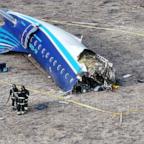Researchers say they've devised the perfect placement for EV chargers
When you buy a gas-powered car, you rarely worry about where to fill it up. That's because gas stations are everywhere. A 2022 McKinsey survey found that more than 40% of prospective electric vehicle (EV) buyers want that same degree of convenience when it comes to public charger availability for EVs.
Engineers at Cornell University say they have devised a solution for where to place EV charging stations so they are convenient for drivers and profitable for companies.

Using Bayesian optimization, a mathematical method that efficiently analyzes complex data to achieve these results, the research team discovered that for urban areas that it's best to install an equal percentage of medium-speed and fast chargers. And because motorists use different speed chargers for different reasons, the researchers said it is essential to consider how they are being used when placing them around town.
For example, the engineers found that fast charging is more important at grocery stores when consumers are only inside for 20 minutes. Work and home charging stations should be medium speed because drivers usually park for hours at a time at those locations.
The researchers say their approach can boost investor returns by 50% to 100% compared to random placement strategies.
The team simulated the behavior of 30,000 vehicles over 113,000 trips in the Atlanta region, considering various traffic patterns and driver decisions. This method allowed them to determine optimal charging station placements.
Yeuchen Sophia Liu, the study's lead author, told the Cornell Chronicle that, "Placing publicly available charging stations around cities sounds like a simple thing, but mathematically, it's actually very hard."
She added, "Economically strategic placement of charging stations could play a pivotal role in accelerating the transition to zero-emission vehicles."
-ABC News Climate Unit's Matthew Glasser







